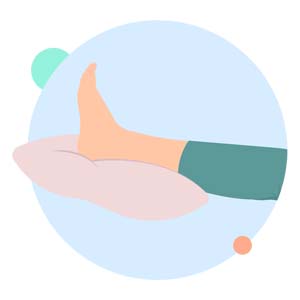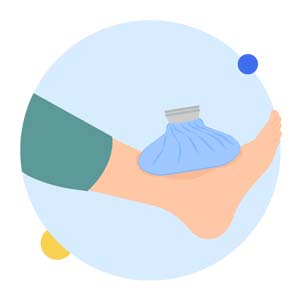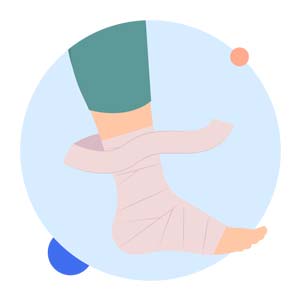Hand and Wrist Care in Palm Springs
Injuries or disorders of the hand and wrist can have a major impact on the ability to perform everyday functions. Desert Care Network orthopedic hand surgeons use some of the latest procedures to expertly help treat your hand and wrist issues and help
you get back to living your life to the fullest.
What Does an Orthopedic Hand Surgeon Do?
An orthopedic hand surgeon uses surgical and nonsurgical techniques to help treat conditions related to the hand, wrist and forearm. They are orthopedic surgeons who have additional training in hand surgery, and they may treat children only, adults only
or both.
Types of Hand and Wrist Injuries and Disorders
Carpal Tunnel Syndrome
Carpal Tunnel Syndrome is a condition that occurs when the median nerve, which runs from the forearm into the palm of the hand, becomes compressed as it passes through an opening from the wrist to the hand. This narrow and rigid passageway of ligament
and bones at the base of the hand is called the carpal tunnel.
The median nerve provides sensory and motor functions to the thumb and three middle fingers. Pain and numbness occur when the lining of irritated tendons or other swelling narrows the tunnel and compresses the median nerve. People with carpal tunnel syndrome
may also experience one or a combination of any of the following symptoms:
- Difficulty making a fist
- Difficulty in gripping objects with one or both hands
- Pain and/or numbness in one or both hands
- The feeling of being pricked with “pins and needles” in the fingers
- Swollen feeling in the fingers
- Burning or tingling in the fingers, especially the thumb, index and middle fingers
- Pain and/or numbness in one or both hands that gets worse at night, causing sleep interruptions
Treatments for carpal tunnel syndrome should begin as early as possible. Early diagnosis and treatment are important to avoid permanent damage to the median nerve. If caught early, carpal tunnel syndrome can be treated without surgery.
Nonsurgical & Surgical Carpal Tunnel Treatments
- Splinting of the hand - prevents wrist movement and decreases nerve compression
- Oral or injected anti-inflammatory medications - reduces swelling
- Ergonomic interventions such as keyboard modification
- Occupational therapy
- Surgery - relieves compression on the nerves in the carpal tunnel
Surgery can be performed either through traditional open manner or endoscopically, which is minimally invasive. During both procedures, the transverse carpal ligament is cut to release the pressure on the median nerve and relieve carpal tunnel symptoms.
Ganglion Cyst Removal
A ganglion cyst is a tumor or swelling on top of a joint. It appears as a fluid-filled lump that changes in size and may appear after injury. Other symptoms include:
- Swelling that may appear over time or suddenly (it may get smaller in size, and may even go away, only to come back after a period of time)
- Non-stop or aching pain that is made worse by joint motion when the cyst is connected to a tendon
- A sense of weakness in the affected finger
Treatment Options
- Splinting of the wrist
- Exercises to strengthen wrist and improve range of motion
- Aspiration
- Surgical removal - recommended when the mass is painful, interferes with daily function or when numbness or tingling of the hand or fingers occurs
Wrist Fracture Repair
A fracture is a partial or complete break in the bone. When a fracture occurs, it is classified as either open or closed.
- Open fracture – the bone exits and is visible through the skin or where a deep wound exposes the bone through the skin
- Closed fracture – the bone is broken but the skin is intact
Fractures occur when there is more force applied to the bone than the bone can absorb. Bones are weakest when they are twisted. Breaks in bones can occur from falls, trauma or because of a direct blow or kick to the body and may have one of or a combination
of the following symptoms:
- Pain in the injured area
- Swelling in the injured area
- Obvious deformity in the injured area
- Difficulty using or moving the injured area in a normal manner
- Warmth, bruising or redness in the injured area
Treatment Options
Wrist fractures may be treated by casting, surgical repair and/or physical therapy or rehabilitation.
Types of Hand Surgery
Depending on your injury or underlying problem, it may be determined that surgery is the best option. A Desert Care Network orthopedic hand surgeon may perform several types of surgical hand procedures, including:
- Fracture repair to fix bones in the hand or fingers
- Joint replacement, also called arthroplasty, in people with severe arthritis of the hand
- Nerve repair
- Surgical drainage to remove a collection of pus if there is an abscess in the hand
- Tendon repair
When is Wrist Surgery Necessary?
Is wrist pain keeping you from rock climbing at Joshua Tree National Park? The wrist pain specialists at Desert Care Network are here to help you get back to doing what you love. Your wrist pain doctor will advise whether or not you need surgery,
such as a wrist arthroplasty, based on the damage, your symptoms, response to prior treatment.
Who Is at Risk for Hand and Wrist Disorders?
- Whether you’re training for the BNP Paribas Open or mountain biking at Murry Hill, sports can put stress and strain on your wrists
- Activities that require repetitive motions such as typing on a keyboard, working on an assembly line or using power tools such as a drilling equipment
- Having underlying medical conditions such as rheumatoid arthritis
Expert Orthopedic Hand and Wrist Care at Desert Care Network
Whether you’ve broken your wrist, torn a ligament or are living with the long-term effects of a condition, such as arthritis or carpal tunnel syndrome, painful hands, wrists and arms can limit your mobility and quality of life. Desert Care Network
provides the following:
- A team of orthopedic hand surgeons who will evaluate and treat your hand and wrist injuries
- The latest techniques for treating nerve compression, soft-tissue and traumatic injuries
- A staff committed to ensuring that your recovery process is swift and effective
Reaching, grabbing, driving and using a computer mouse are activities you probably take for granted. But they’re only possible because of the flexibility of your fingers, hand, wrist, arm, elbow and shoulder. These extremities are anatomically
complex and depend on the continual movement of joints, bones and muscles. They get a lot of use. They also get a lot of abuse which make them highly prone to injury.
The hand surgeons at Desert Care Network evaluate, treat and rehabilitate the muscles and joints of the hand and arm. Their plan of care is designed to fit your needs and includes treatment of the following:
- Nerve compression syndromes, such as cubital tunnel syndrome and carpal tunnel syndrome
- Soft-tissue sprains, strains and contusions
- Overuse and traumatic injuries, such as fractures and full and partial dislocations; degenerative and rheumatoid arthritis; tendon, nerve and ligament damage; rotator-cuff tears; and impingement syndromes of the elbow and wrist
After any type of hand and wrist surgery, you will need rehabilitation and physical therapy in order to return to daily activities without pain and stiffness.
When Should You See a Hand Surgeon?
If you experience pain in your fingers, hands, wrists or arms, one of our experienced hand doctors in Palm Springs may be able to help. While hand surgery may be a consideration, nonsurgical treatments, such as physical and occupational therapy, are
also options that can help to restore movement and reduce or eliminate your pain.
If you experience any of the symptoms mentioned in this article such as constant pain and numbness in your hands, seek medical help immediately.
Are you ready to get started? To find out more, visit www.DesertCareOrtho.com








